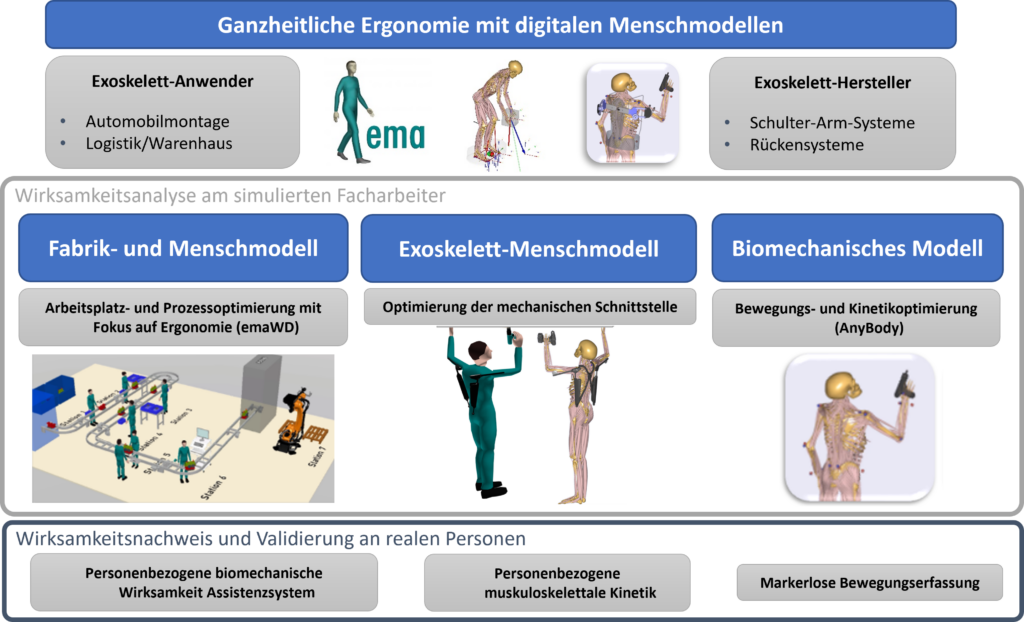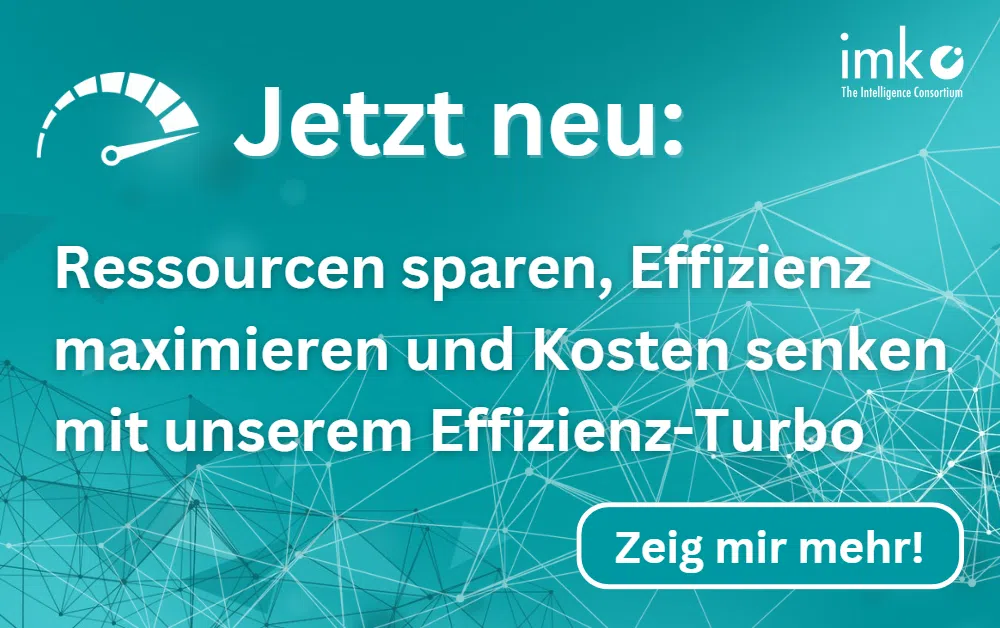Overview
Exploring methods to study & evaluate exoskeletons using markerless motion capture and 3D human models for virtual planning of manual work processes.
Grantor:
BMBF
Funding code:
01IS21025 A-D
Term:
10.09.2021-29.02.2024

Project content
In recent years, the use of exoskeletons in industry has increased significantly. These ergonomic tools are worn directly on the body and are designed to support employees in physically demanding activities such as overhead work or lifting heavy loads. Particularly in the wake of the steadily rising average age of the working population and the continuing increase in days lost from work due to musculoskeletal disorders, exoskeletons that can be used flexibly as a supplement to classic ergonomic aids have great potential for reducing work-related complaints and the resulting costs for employers, health insurance companies and public authorities. However, there is still a need for research regarding the exact effects on the musculoskeletal system and concrete uses of exoskeletons in real settings.
Target
The "DigitalExonomics" research project sets itself the task of developing a new comprehensive methodology for investigating and evaluating the ergonomic effects of wearing exoskeletons in industrial applications on physical stress using markerless motion capture and 3D human models (emaWD and AnyBody) and integrating the new analysis capabilities into the ema-WD software for virtual planning of manual work processes as an add-on module.

Research focus
- Early efficacy analysis of exoskeletons using validated 3D simulations.
- Use of markerless motion capturing technologies to easily record motion when using exoskeletons in the lab and field.
- Transfer markerless motion capture data (Captury) to biomechanical (AnyBody) and ergonomic (emaWD) human models to perform detailed analyses and evaluations
- Additional enhancements to emaWD to perform digital biomechanical analysis of exoskeletons.
Digital Exonomics Project






